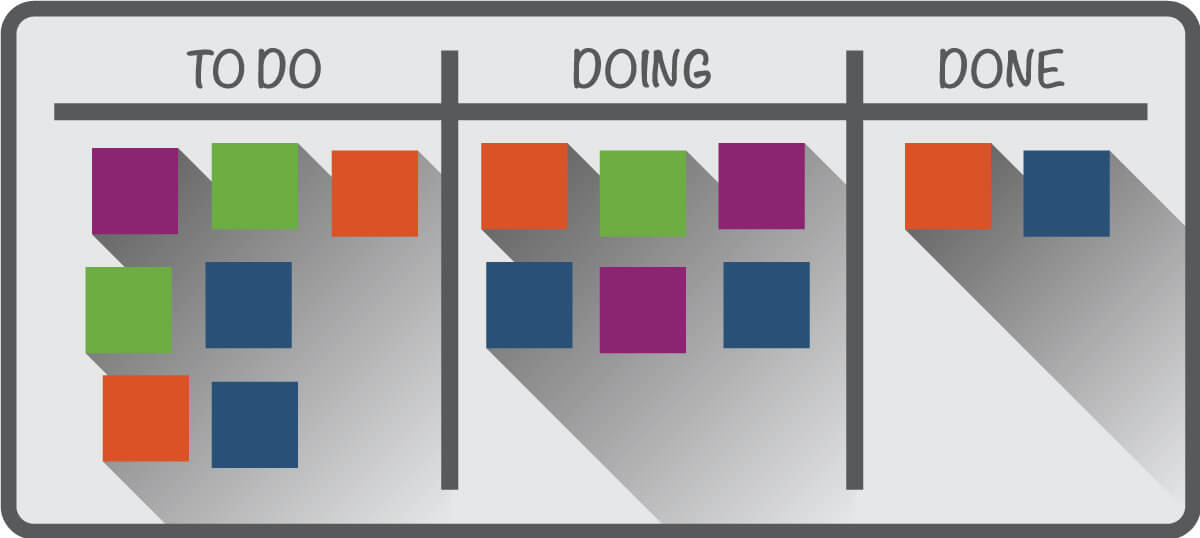To address challenges and opportunities in managing projects: 1) Make Work Visible and 2) Identify Communication Channels and 3) Hold Project Team Meetings.
1) Make Work Visible
Identify a common location or tool where the entire team can view the work needed to complete the project.
A Kanban board is one way to make work visible by using cards to represent work items and columns to represent work status (e.g., To Do). As work is completed, the work card is moved across statuses so the entire team can see the status of the project work |  |
Tools to make work visible | |
Trello |
|
Jira |
|
Google Sheets |
|
2) Identify Communication Channels
Communication tools:
- Google Group. for a single email that goes to the project team, which can be used to share Drive folders, Calendar invites, and set up a Google Chat room
- Google Chat for individual chats and establishing a room for project chats
3) Hold Project Team Meetings
Connect the team periodically through team meetings. These are meetings based on the Scrum framework:
Planning Meeting | Start with a prioritized list of the known work that needs to be done (i.e., the project backlog - what needs to be done to complete the project?). Tip: If you don't have that list of the work, set up a Team Planning session to create and prioritize one. During the meeting, the team and leadership
|
Daily Check-In | In a daily 15-minute meeting, each member answers the following questions
|
Review Meeting | After completing a cycle of work (or a sprint), meet to review and share the team's finished work. If anything is unfinished or not "done", add it back to the project backlog. If it's done, mark it complete and celebrate! |
Retrospective Meeting | Check In and Evaluate: Reflect on work completed together and answer the following
With information shared, make adaptations and/or remove obstacles to improve the team's work |
Resources
University Tips | Tips from Others |
|